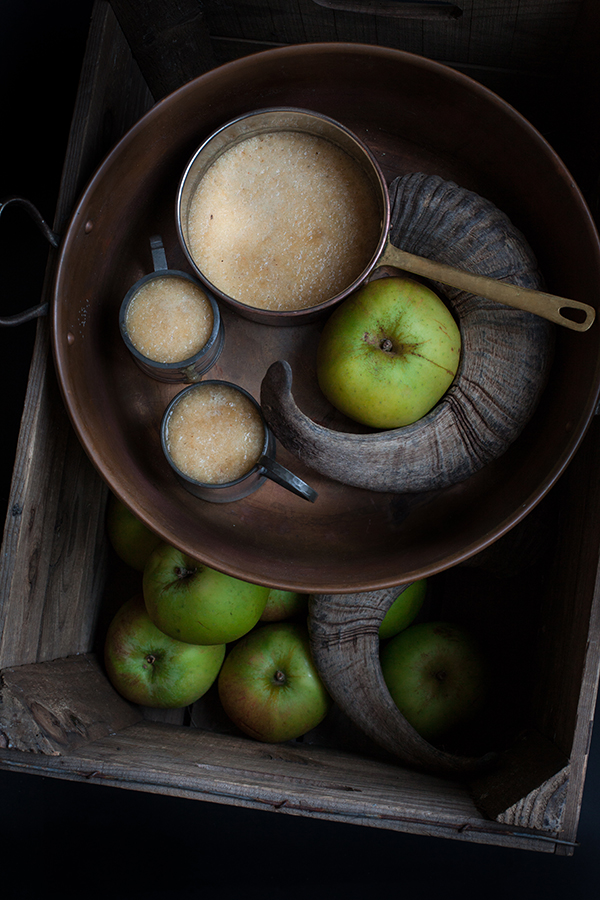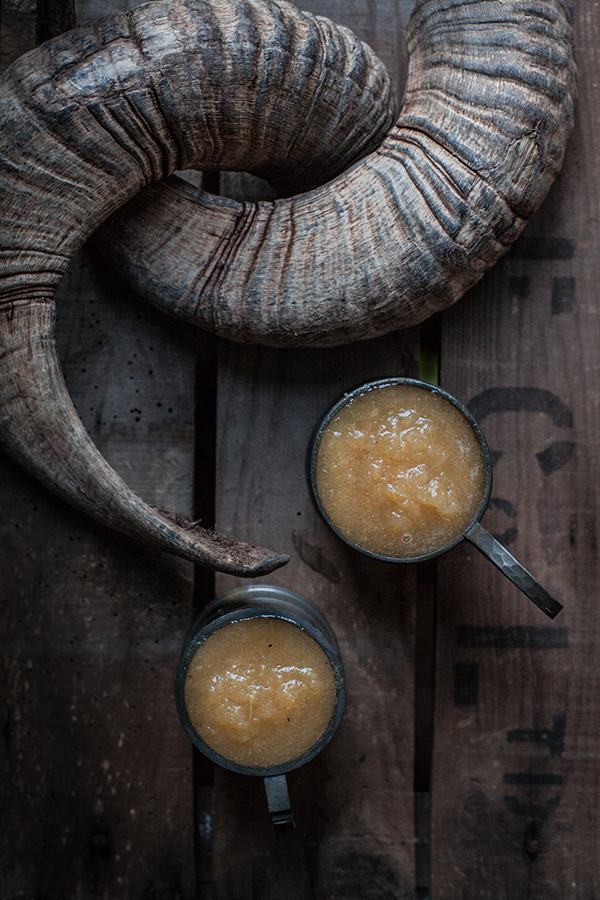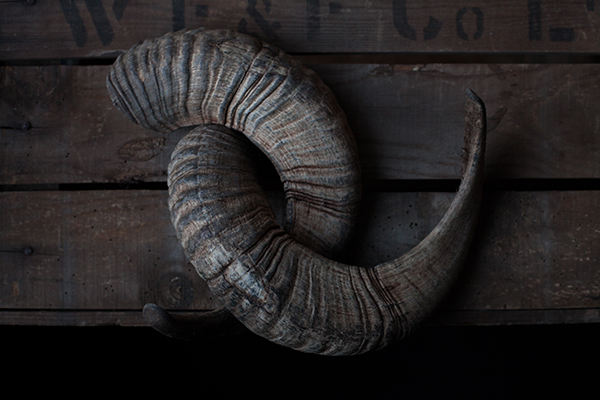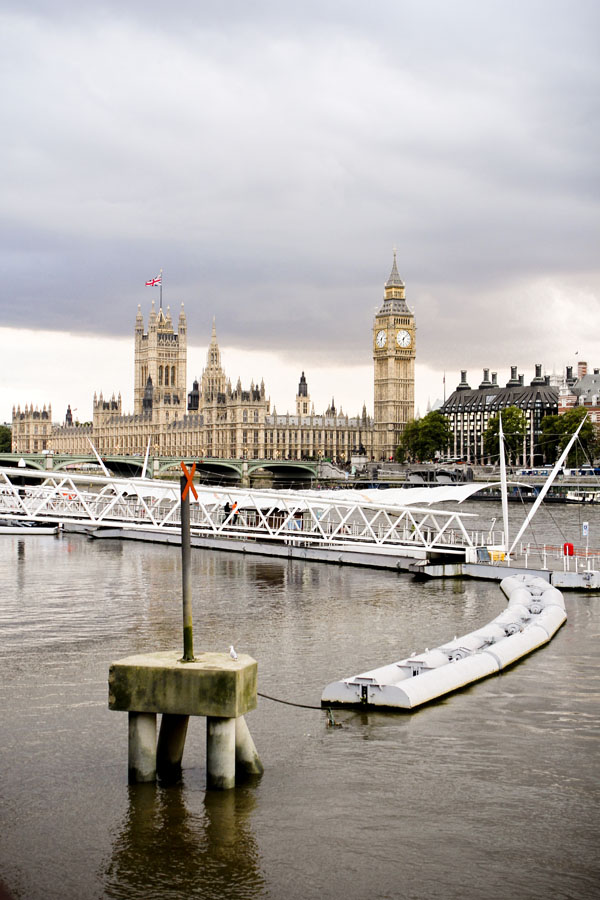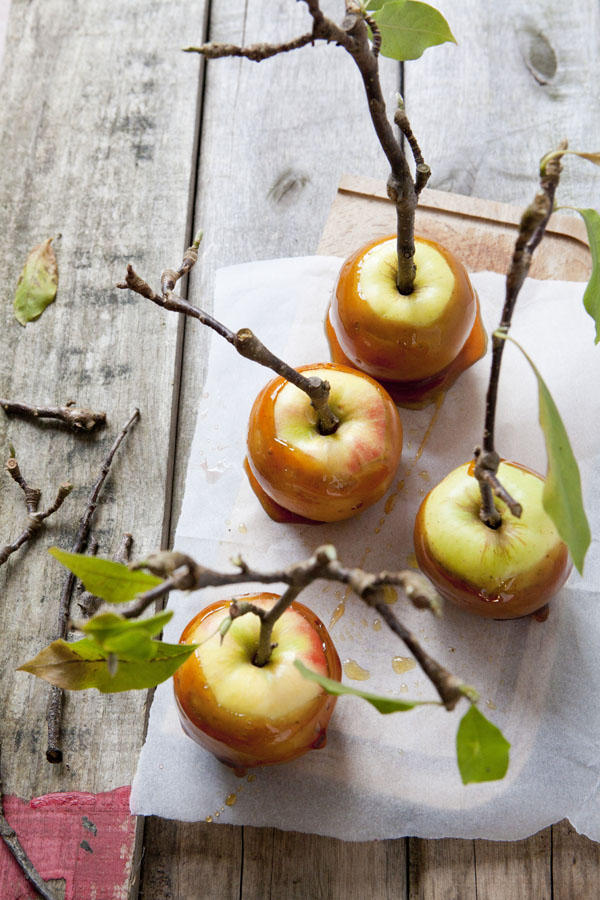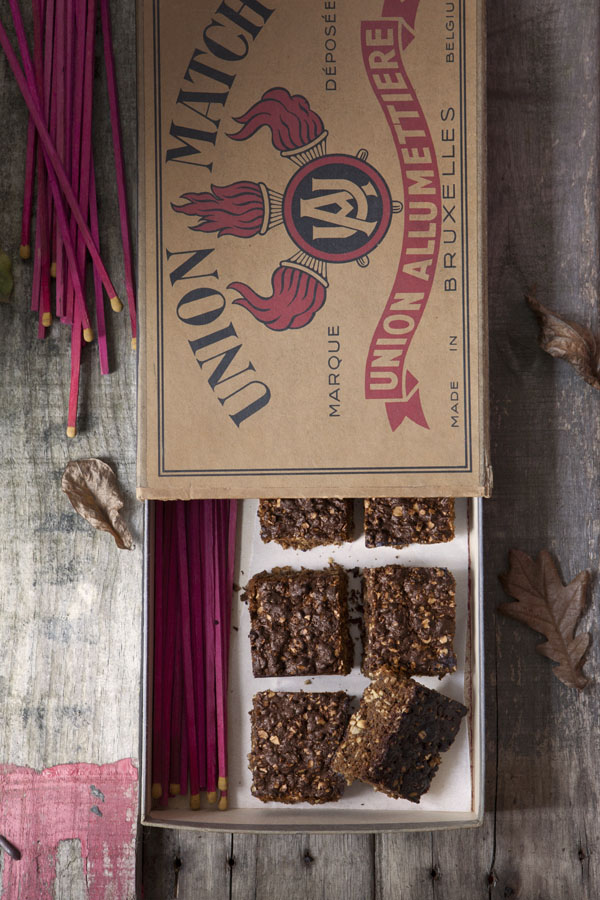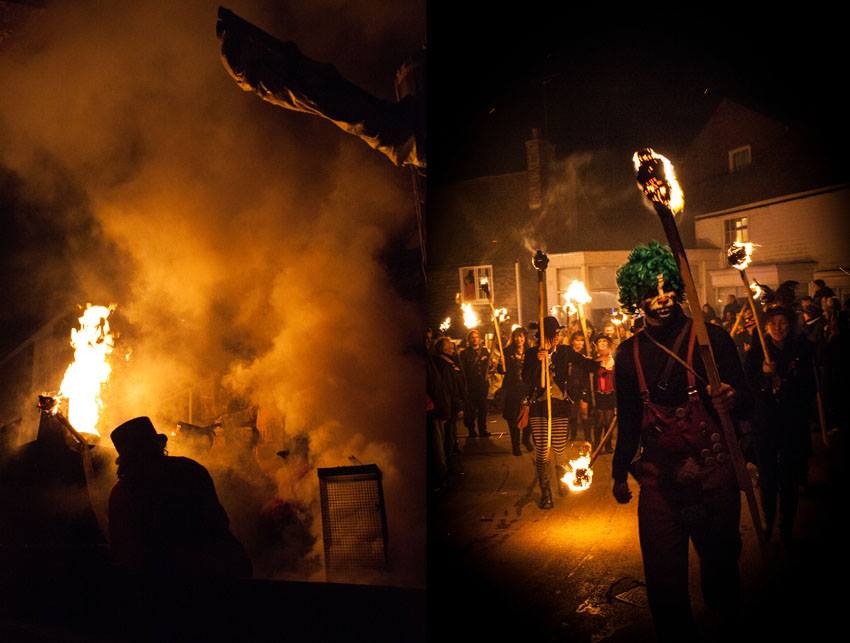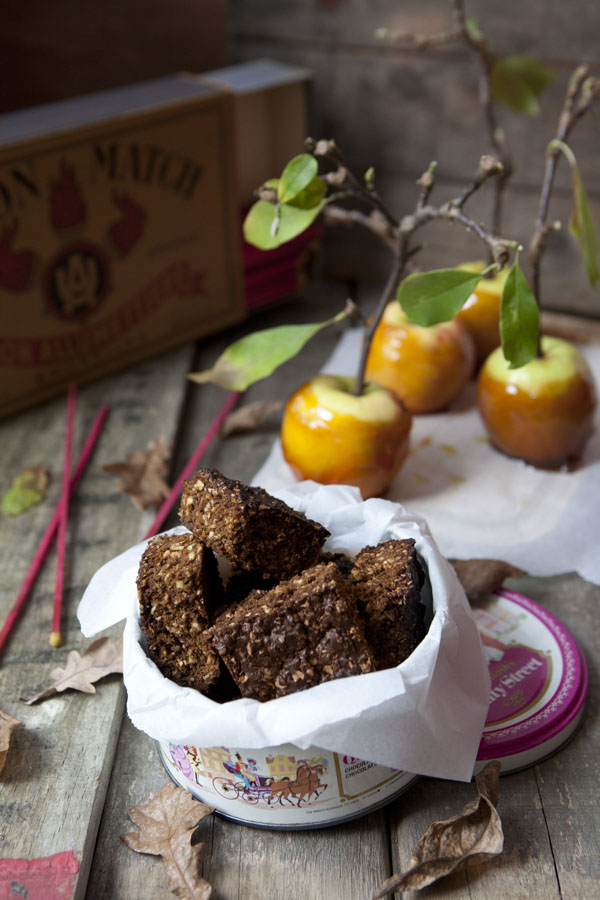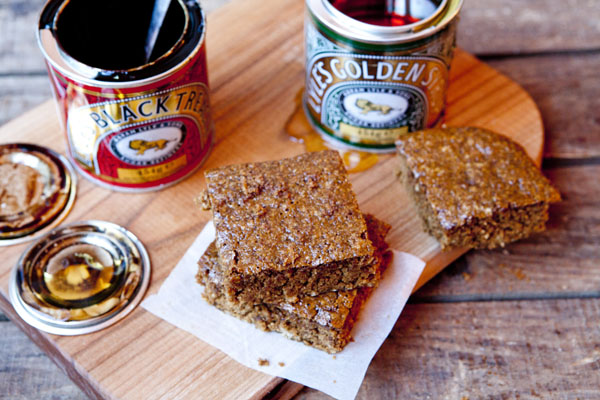The post We shall drink Lambswool on the Twelfth Night appeared first on Miss Foodwise.
]]>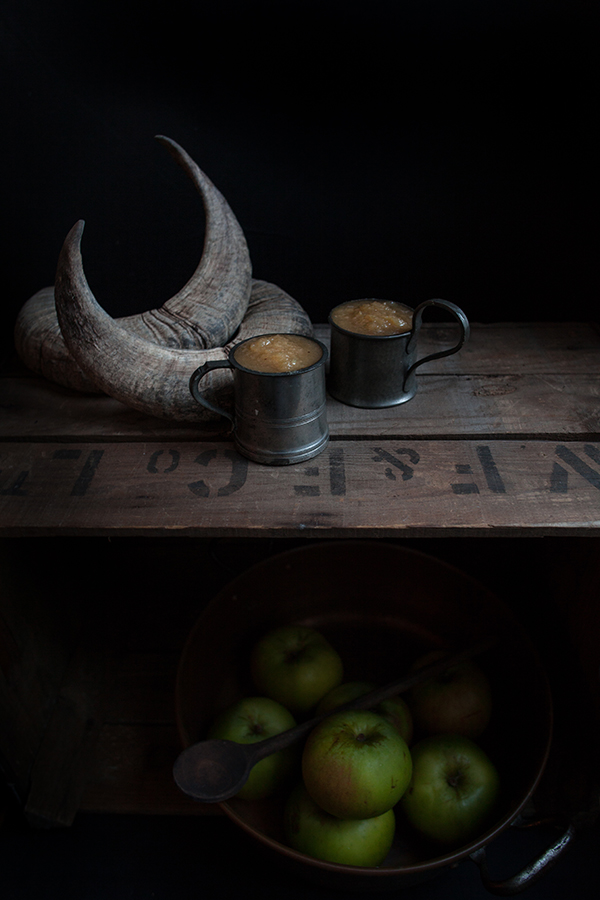
Although I was brought up with a lot of Pagan traditions, living in the city of Antwerp meant that some customs were harder to follow than others. As city dwellers far removed from any orchard or field, we were ignorant to the traditional rites surrounding harvest and sowing time. If there is no nature to honour, no field to gather around the cleansing fire, the feasting quickly becomes part of the past and forgotten.
Industrialisation has brought us wealth and the choice of matching shoes with handbags on a regular tuesday morning. It has brought the technical bits and bobs we all love and loathe. The big world has become smaller and the challenges bigger. The lucky few still live outside of the ever growing concrete cities. We follow their lives on Instagram with a sense of nostalgia, as if we have ever experienced living surrounded by trees and liberating fields and forests, and then tragically lost it.
But that is what it is, we have lost something, and most of us can feel it. There have never been more depressed people, nor have there ever been more people who are unhealthy because of their eating habits, eating too much rather than starving, but malnourished nonetheless. Our daily bread is soiled with adulteration, slowly making us ill. Animals are kept away from fields and live their ever shortening lives on the concrete floors of factory farms to keep the cost of your daily need low, fruit is left on the trees to rot because farmers can’t afford to harvest it, the price a farmer gets for his milk hasn’t gone up in 20 years (based on Belgian farms) so milk is being sprayed onto the soil of the farmland where the cows can no longer roam freely because of bureaucratic nonsense about fertilizer. Small scale generation long fishermen turn their boats into flower beds because the fishing quotas set out to protect fish stocks have made it so that only the big destructive factory fishing vessels can make a living, scooping up the fish only for part of it to be actually consumed and the rest turned into animal feed because their nets just catch too much for it all to be sold and cooked by us humans. The fisherman that could have made his day by catching one Dover Sole, now has to trow it back, while the big monsters take and take and kill the sustainable fishing industry.
We got lost as humans, because we lost part of our human nature.
Let today be an Epiphany.
The Epiphany is the Christian feast that concludes the twelve days of Christmas. In Pre-Christian pagan traditions this marks the time for Wassail. The practice of ‘wassailing’ meant singing and drinking in the apple orchards on the Twelfth Night to awaken the trees, to warn of the evil spirits and pray for a good harvest in the autumn. It could be that the feast of Wassail comes from the Celtic festival called ‘La Mas Ubhail’, the Feast of the Apple. Wassail comes from ‘waes hael’ meaning ‘be thou healthy’ or ‘be whole’, a salutation in Old English. During the feast these words would be addressed to each other and to the oldest apple tree in the orchard.
A drink traditional to Wassail is called ‘Lambswool’ and it is very possible that ‘La Mas Ubhail’ got phonetically Anglicised, to ‘Lamasool’ and later ‘Lambswool’. In historical books we often see that a lot of words were written down phonetically, resulting in a number of different ways to note down one single word.
Robert Herrick, a mid 17th century poet mentioned the custom of Wassailing and Lambswool in his poem about about Twelfth Night, we also get an idea of the recipe too:
Next crown the bowl full With gentle lamb’s wool Add sugar, nutmeg and ginger, With store of ale too; And thus ye must do To make a wassail a swinger
Give then to the king And queen wassailing : And though with ale ye be whet here, Yet part from hence As free from offence As when ye innocent met here.
The drink Lambswool is a mulled ale, poured over hot apple puree, although some people swear by whole apples, or apple pieces cooked in spiced cider or ale. However, as far as a drink goes, you can’t swallow a whole apple, nor can you swallow apple pieces so it is most probable that the recipe containing whole apples is just derived from the recipe made with apple puree. It is possible that the soft puree resembled a lambs fleece to people in the old days, resulting in giving it the name of what they associated it with, lambs wool.
Another reason for thinking that an apple puree was used it that this is the end of the season, so the apples which are left in times before refrigeration and fancy techniques to keep fruit from ripening, would not have been the prettiest of the bunch. An hot and spiced apple puree fortified with ale would be warming on a january evening, and would allow people to prepare it in a kettle rather than an oven which is used for the recipe with whole apples. Remember this is a country dish and ovens were a privilege for the well-to-do. But the sugar in the dish also tells us this wasn’t a drink for the poor, it could have been a special treat from the lord of the manor, or from the farmer to his farm labourers.
Last year I spoke to you about the intriguing Twelfth Cake, a fruit cake elaborately decorated with sugar or wax figurines which was also a privilege for the well-to-do. This cake, which is also mentioned by Herrick in his poem also started of as a humble ‘plum cake’ for the feast of Wassail. City folk picked up on it and adjusted the cake to their festive needs, making it the centrepiece of the table and causing queues in front of bakeries. Because it became popular in the city and with the wealthy, we get our first recipe for it in a 1803 book. A recipe for Lambswool is more difficult to find, as the drink remained in the countryside. So judging from the poem of Robert Herrick, I came up with this recipe for you.
Lambswool
serves 6-8
What do you need
- Bramley or Cox stewing apples, 500 gr (peeled and cored about 300 gr)
- water, 100 ml
- sugar 100 gr
- freshly grated nutmeg, 1 teaspoon
- ginger powder, 1 teaspoon
- a good ale, 750 ml
Method
Peel and cut your apples in small pieces and place in a pot along with 100 ml of water and the sugar and spices. Stew until soft and puree so there are no bits left.
When ready to serve, heat up the apple puree and add the ale while whisking. You should get a nice froth while doing so. Serve at ones.
Are you celebrating the Twelfth Night? Or are you having a slice of King cake, galette Du Roi or Driekoningen taart? Or are you wassailing and drinking Lambswool?
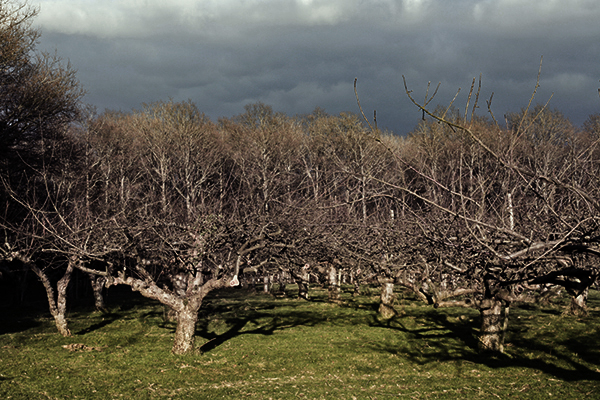 |
| Ancient apple trees in Sussex |
You might also like
Twelfth Cake for Twelfth Night >
The post We shall drink Lambswool on the Twelfth Night appeared first on Miss Foodwise.
]]>The post Gunpowder, treason and bonfire parkin appeared first on Miss Foodwise.
]]>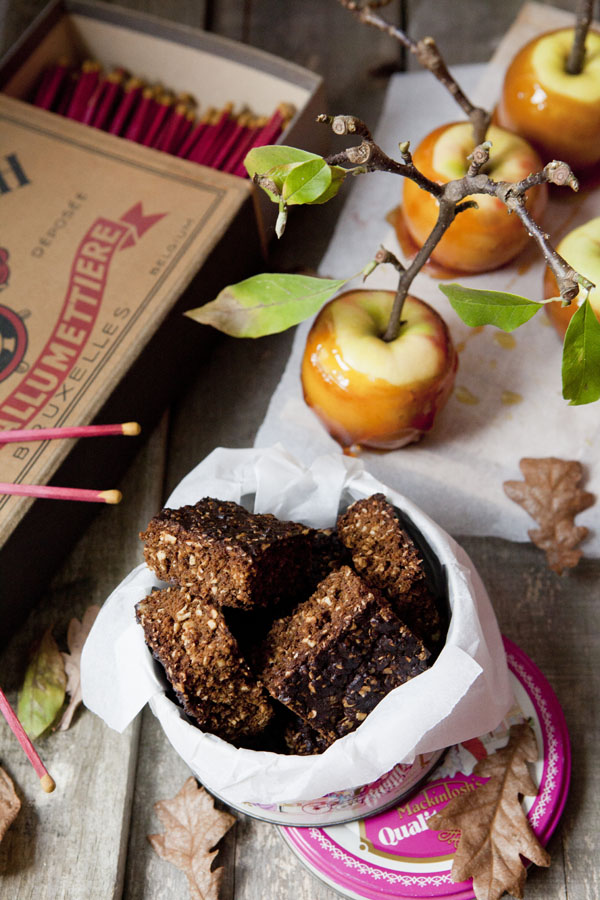
The fifth of november, remember?
One of the most intriguing of English traditions to me is Bonfire night. Otherwise known as Guy Fawkes night it is a feast that commemorates the failing of a plot by Roman Catholic conspirators to blow up the House of Parliament in London killing the Protestant King James in the process.
Although Guy Fawkes is mostly remembered on this occasion, it was Robert Catesby who was chief instigator of the Gunpowder Plot. Catesby turned against the government of Elizabeth I when his father along with so many others Catholics, was prosecuted for refusing to conform to the Church of England. When Elizabeth I died, James – son of the Catholic Mary Queen of Scots – came to the throne which gave the Roman Catholics new hope for greater religious freedom. When this hope turned pear shaped the English Catholics plotted to put Arbella Stuart on the throne, she was Catholic, James’ cousin and a major claimant to the throne of England having both Tudor and Stuart bloodlines. Arbella always stayed close to the throne but never became queen, by blood she had a larger claim to succession and she became known as the ‘Queen that never was’.
The seed to the Gunpowder plot however was planted nearly a century earlier by another Tudor, Henry VIII. When he issued the Act of Supremacy which declared him head of the Church of England to be able to divorce the first of his six wives, he started a century of violent religious turmoil. Henry’s Church of England wasn’t initially Protestant but his son Edward VI instituted more Protestant reforms. Mary I, being Henry’s daughter with his Catholic wife whom he divorced to marry Elizabeth’s mother Anne, was a Catholic and tried to restore the Catholic faith. She started her five year bloody reign by reviving the laws against heresy and was hated for it. The result was the persecution of Protestant rebels and the execution of some 300 heretics. Elizabeth’s accession to the throne on Mary’s death was greeted with enormous jubilation from the people. Yet again the Roman Catholics were facing persecution and the plotting to replace Elizabeth I with Mary Queen of Scots began.
This brings us back to Mary’s son James and the infamous Gunpowder treason and plot.
On the 5th of november 1605 Guy Fawkes was apprehended while guarding 36 barrels of gunpowder in the cellar under the house of Parliament. How they found out about the gunpowder in the cellar leads to speculation but it is presumed that someone from within the circle of conspirators of the plot warned someone to stay away from parliament on the 5ft. After his apprehension Fawkes was tortured to give up the names of his accomplices.
The signature on his confession after who knows how many hours – days – of torture is somewhat shaky but you can clearly make out his name. This confession however is said not to show all the names of those involved. The confession believed to be signed one day later shows all the names and the signature is that of a broken, beaten and suffering man. The letters are barely coming together, you can faintly see the name Guido but I guess the surname was too much. It is some what disturbing to see his handwriting change in such a manner but it is quite remarkable that these documents were saved.
Guy (or Guido) Fawkes was executed along with several of his conspirators after being tried for high treason januari 1606. the sentence was hanging, drawing and quartering.
Parliament passed and act that called for the 5th of november to be celebrated as a joyful day of deliverance. There are a lot of rhymes associated with this day and although the earliest is said to date back to 1742, I have not found the source and therefore can not believe it to be accurate. The rhyme ‘Remember Remember the 5th of november’ adapted by for movie V for Vendetta has however been in practice for decades.
Pennies for the Guy
To this day the Houses of Parliament are still traditionally searched by the Yeomen of the Guard just before the State Opening which was the day on which the plot was discovered. Straw or cloth effigies of Fawkes called ‘Guys’ are often made by youngsters and carried around displaying them to passers-by asking for ‘A penny for the Guy’ and often they are burned in the bonfire celebrations. Food is a big part of the tradition today with bonfire toffee, toffee apples and spicy parkin cakes. A parkin is a sticky ginger cake from the north of England and because Guy Fawkes was a Yorkshireman it has since been associated with bonfire night.
My research into bonfire night continues and I am sure next year I will have plenty more to share with you. I want to look deeper into the links with pagan rites and folklore.
But for now this will have to do and I leave you with a parkin.
After quite a few recipes tested, some over a 100 years old and some new, I came to this one and think it makes an enjoyable cake. In the parkin you see in the pictures of this post I used porridge oats, they were too rough so I changed the recipe to medium oatmeal. How this recipe turned out you can see the picture that comes after the recipe, this one I took just before dark so excuse the messy picture, I had to be quick about it.
If you are lucky enough to be in England next weekend when the large bonfires will be lid, I wish you loads of fun and plenty of food and booze to keep you going.
Toffee apples
If you want to make the toffee apples, check out this recipe here >
I just replaced the lollypop sticks with branches from a tree in my garden, looks ever so pretty.
Bonfire parkin
What do you need
For 9 squares
- 100 g (3ó oz) rolled oats (see page 16)
- 200 g (7 oz) golden syrup or maple syrup
- 45 g (1ó oz) Lyle’s black treacle or molasses
- 200 g (7 oz) butter
- 200 g (7 oz) oat flour
- 2 tsp bicarbonate of soda (baking soda)
- 2 tsp ground ginger
- 1/2 tsp ground nutmeg
- 1 egg
- 2 tbsp whisky or milk
- pinch of sea salt
Method
For a 20 cm (8 inch) square cake tin
Preheat your oven to 160°C (320°F) and prepare the cake tin (see page 21).
Briefly pulse the oats in a food processor fitted with the blade attachment.
Heat the golden syrup, black treacle and butter in a saucepan until melted and combined. Set aside to cool for a few minutes, then add the chopped oats and the
remaining ingredients. Combine well with a wooden spoon or spatula. Spread the mixture into the cake tin.
Bake for 50–60 minutes and then cool in the tin. When the cake is cold, cut it into squares and pack it in an airtight container to rest for at least a day before serving.
The cake gets stickier and more moist every day and can last for 2 weeks if you can hide it for that long.
Enjoy!
You might also enjoy
Bonfire, Bangers and riots >
The post Gunpowder, treason and bonfire parkin appeared first on Miss Foodwise.
]]>